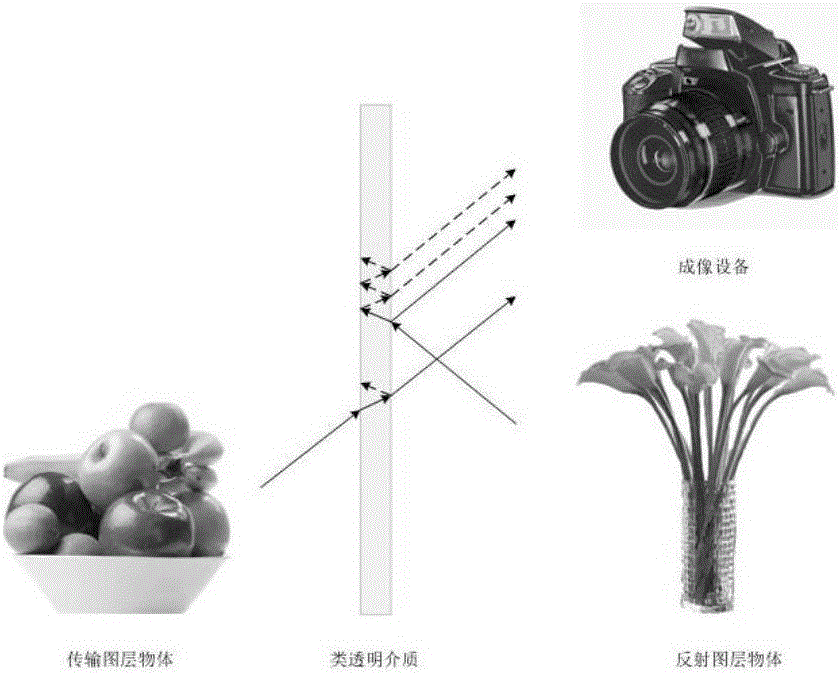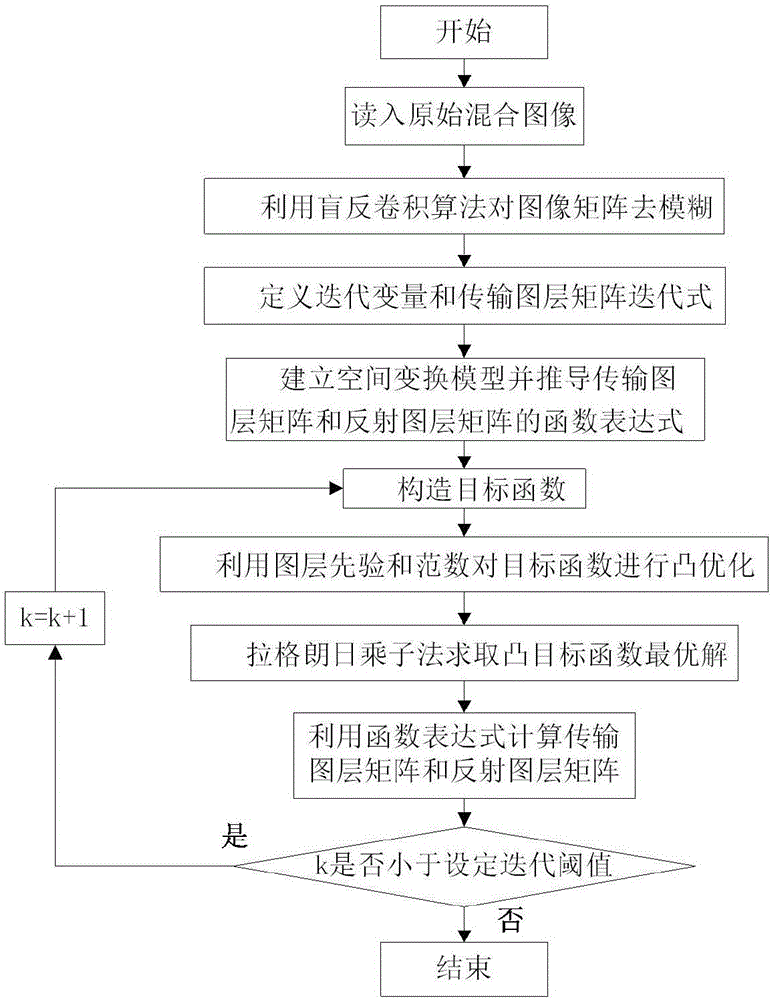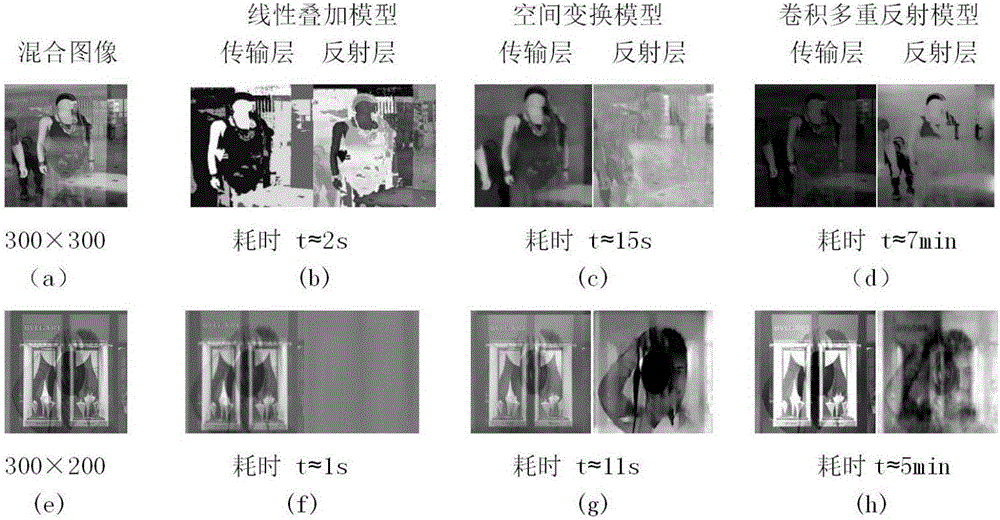Optical layer decomposition method based on spatial transformation model
A space transformation and layer decomposition technology, applied in image data processing, 2D image generation, instruments, etc., can solve the problems of poor decomposition effect and low efficiency, and achieve the effect of improving computing efficiency and layer decomposition effect
- Summary
- Abstract
- Description
- Claims
- Application Information
AI Technical Summary
Problems solved by technology
Method used
Image
Examples
Embodiment Construction
[0043] Below in conjunction with accompanying drawing and specific embodiment, the present invention is described in further detail:
[0044] refer to figure 2 , the present invention comprises the following steps:
[0045] Step 1, read in the original mixed image to obtain an image matrix I, in which multiple information of transmission and reflection are mixed.
[0046] Step 2, deconvolution is the basic method to restore the blurred image. If the blur function of the imaging system is known, deblurring is a conventional deconvolution problem. Blind deconvolution algorithms are required if there is no or little prior knowledge about the mixture of transmission and reflection layers. The image matrix I is deblurred using the blind deconvolution algorithm to obtain the initial transmission layer matrix The algorithm can realize the blind separation of different layers in the mixed image on the basis of maintaining the complex structure of the mixed image and the clear edg...
PUM
 Login to View More
Login to View More Abstract
Description
Claims
Application Information
 Login to View More
Login to View More - R&D
- Intellectual Property
- Life Sciences
- Materials
- Tech Scout
- Unparalleled Data Quality
- Higher Quality Content
- 60% Fewer Hallucinations
Browse by: Latest US Patents, China's latest patents, Technical Efficacy Thesaurus, Application Domain, Technology Topic, Popular Technical Reports.
© 2025 PatSnap. All rights reserved.Legal|Privacy policy|Modern Slavery Act Transparency Statement|Sitemap|About US| Contact US: help@patsnap.com



